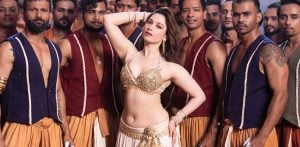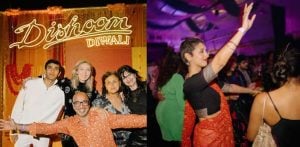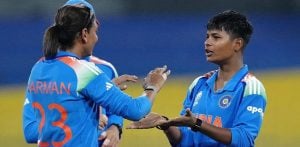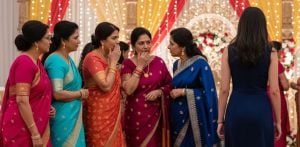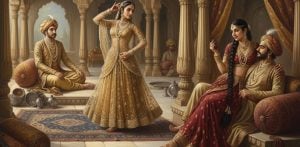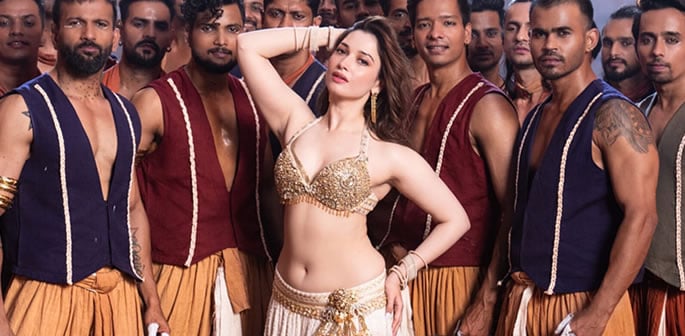The lyrics, too, have become increasingly explicit
Bollywood, for all its global influence and cinematic evolution, remains tethered to the sexualisation of its female characters.
This isn’t merely a relic of a bygone era; a cursory glance at recent blockbusters confirms that the commercial logic of framing women as objects of desire is alive and well.
The stylised, suggestive sensuality of the 1960s and 70s has given way to a more overt, high-definition version in the 21st century, but the underlying principle remains unchanged.
While the industry has made undeniable progress, the foundational architecture of its success still seems to lean heavily on this trope.
DESIblitz looks at the complex interplay of commercial pressures, creative conventions, and audience expectations that ensure female sexualisation remains a cornerstone of mainstream Hindi cinema.
The ‘Item Song’

Central to this debate is the ‘item song,’ a musical set-piece that functions as both a cultural phenomenon and a potent marketing device.
These high-energy numbers, often featuring a star actress in a guest role, are engineered for virality, driving a film’s promotional campaign and guaranteeing audience interest.
Proponents have occasionally framed them as expressions of female empowerment, moments where a woman takes control of her sexuality and commands the narrative. They argue that in a patriarchal world, a woman leveraging her desirability for fame and fortune is an act of agency in itself.
However, a more critical examination reveals a troubling dynamic.
The very term “item”, derived from Mumbai slang, inherently objectifies the performer, reducing her to a commodity.
Academic analysis highlights a clear economic incentive driving this trend; these songs are a lucrative venture for producers and offer actresses a significant payday and a surge in visibility.
The choreography, while often technically brilliant, frequently features suggestive movements, and the camera’s focus isolates and fragments the female body, lingering on the waist, hips, or chest.
The lyrics, too, have become increasingly explicit over the decades, moving from poetic innuendo to direct propositions.
The result is a commercially successful system that financially rewards the very practice of objectification, creating a powerful disincentive for creative change.
Item songs are a standalone product that generates its own revenue through streaming, television rights, and live performances, all built on the back of a sexualised female performance.
Dominance of the Male Gaze

The way women are presented in Bollywood is fundamentally shaped by the “male gaze”, a concept coined by film theorist Laura Mulvey.
It describes how the cinematic perspective is often constructed for a masculine, heterosexual viewer.
The audience is implicitly positioned to see female characters not as subjects with their own agency, but as objects to be looked at and desired by their male counterparts.
This framework manifests in numerous ways.
Think about how many action films introduce their female lead, a supposed spy or police officer, not with a display of her professionalism, but with a slow-motion shot of her emerging from a swimming pool or dancing in a nightclub. Her skills become secondary to her spectacle.
This gaze also informs the narrative of romance.
On Reddit, users pointed out the recurring mention of “bending wrists”.
Known as “baiya marodna”, it is presented as a romantic gesture but it subtly normalises a dynamic where male desire can override female consent, packaging a form of physical control as harmless flirtation.
This cinematic language teaches generations of viewers that romance involves a degree of male assertion and female acceptance, something that is rarely challenged.
The Economic Logic
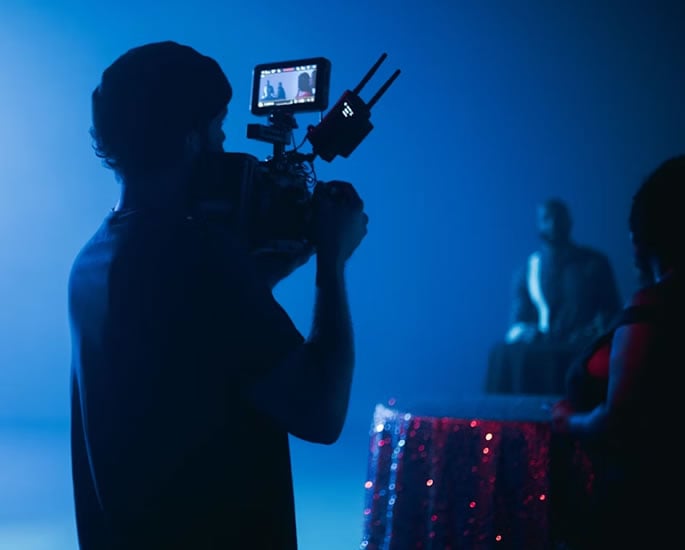
To understand why these tropes keep showing up on screen, you need to look at the harsh economics of filmmaking.
Films are expensive and risky, and producers are constantly hunting for ways to protect their investments.
In this light, the sexualisation of female characters is a calculated business move.
A glamorous heroine paired with a catchy, titillating song is seen as a reliable way to pull in young male audiences, who make up a large slice of the box office.
Meanwhile, quieter, character-driven stories feel like a much bigger gamble.
This profit-driven logic encourages creative caution.
Investing in a nuanced, female-led story is viewed as riskier than sticking to a formula that’s already proven to work.
Research shows that capitalism and patriarchy work hand in hand, ensuring content aimed at the dominant male audience takes priority.
And it’s not just about ticket sales.
An actress’ “glamour quotient”, largely defined by how she’s sexualised on screen, directly affects her chances of landing lucrative brand deals, which often make up the bulk of her income.
In other words, the entire economics of stardom feeds into this cycle of objectification, giving actresses every incentive to play along.
Bollywood’s Restrictive Lens
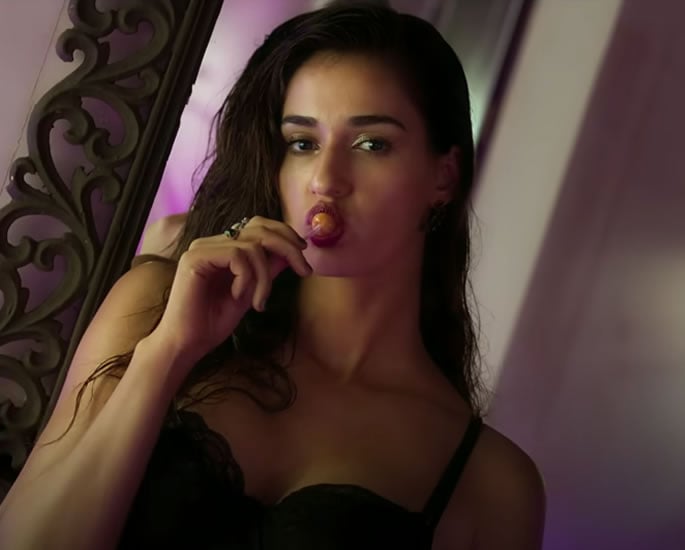
Bollywood has long restricted its female characters to either the “good girl” or the “bad girl”.
The good girl is chaste, submissive, and rewarded with the hero’s love and a stable family life. The bad girl is sexually liberated, independent, and often painted as a disruptive force.
This lets filmmakers titillate audiences with the bad girl while still upholding conservative social norms through the good girl.
Nowhere is this more obvious than in the item song.
The ‘item girl’ or vamp can be overtly sexual precisely because she exists outside the respectable space reserved for the heroine.
Studies of Bollywood’s history show the industry has always found ways to justify women dancing sensually on screen.
This gave rise to archetypes like the vamp, the professional courtesan, or the heroine forced into a ‘noble sacrifice’.
While these roles have evolved, they still shape modern stories, reinforcing the idea that female sexuality must be either virtuous or villainous.
Rarely do we see a female character who is sexually autonomous, leads her own story, and escapes judgment or relegation to a supporting role.
The Audience’s Role
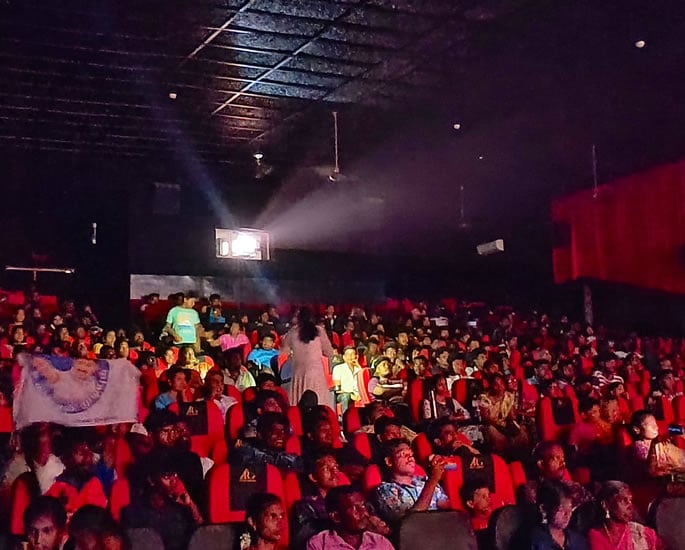
It’s impossible to ignore the audience’s part in keeping this cycle alive.
In many ways, the industry is simply responding to what viewers want.
When an item song racks up hundreds of millions of views online, it sends a clear message: this content isn’t just accepted; it’s actively devoured.
Psychologically, this ties into “cognitive dissonance”, the discomfort we feel when our actions conflict with our values.
Someone might support gender equality yet still enjoy a catchy, objectifying song.
It’s often easier to shrug it off as harmless fun than to confront its deeper implications.
The effect is amplified by what researchers call the “purgation effect,” where audiences take comfort in familiar, even problematic, cinematic formulas.
Social media adds another twist.
Platforms like X and Instagram can call out misogyny, but they also supercharge it.
A controversial song can go viral through both praise and criticism, and in today’s analytics-driven industry, all engagement counts as success.
The result is a feedback loop: audiences consume what the industry offers, and the industry keeps giving it, making meaningful change painfully slow.
Bollywood’s reliance on female sexualisation is a systemic issue embedded in the industry’s commercial and creative DNA.
It stems from powerful economic incentives, entrenched narrative conventions, and a cultural feedback loop between filmmakers and audiences.
While more progressive, female-led stories, often driven by streaming platforms, offer a glimpse of a new direction, they remain exceptions in a mainstream landscape dominated by a tried-and-true, profitable formula.
The industry now sits in a tense balancing act, where the commercial juggernaut of old formulas collides with the rising wave of progressive storytelling.
The outcome of this struggle could reshape Bollywood as the world knows it, while also reflecting how society is evolving in its understanding of gender, power, and respect.












